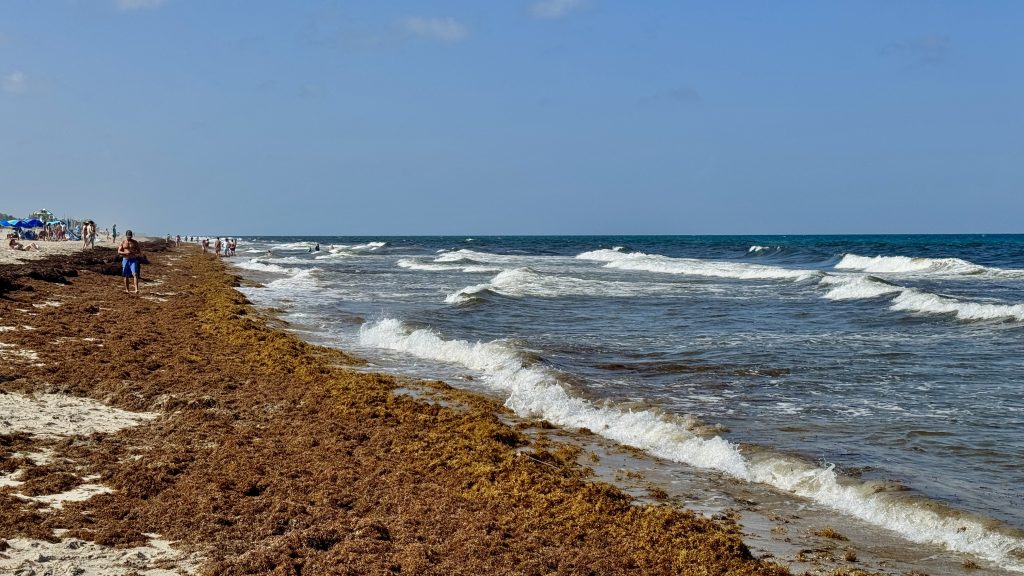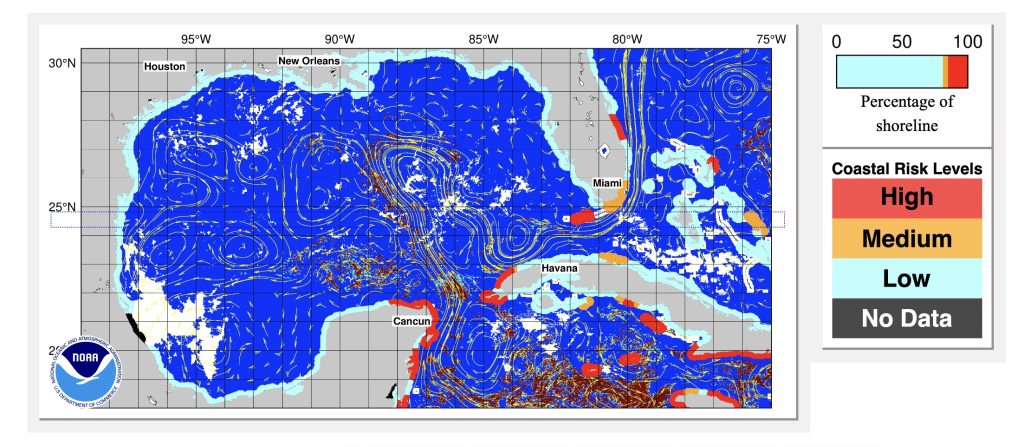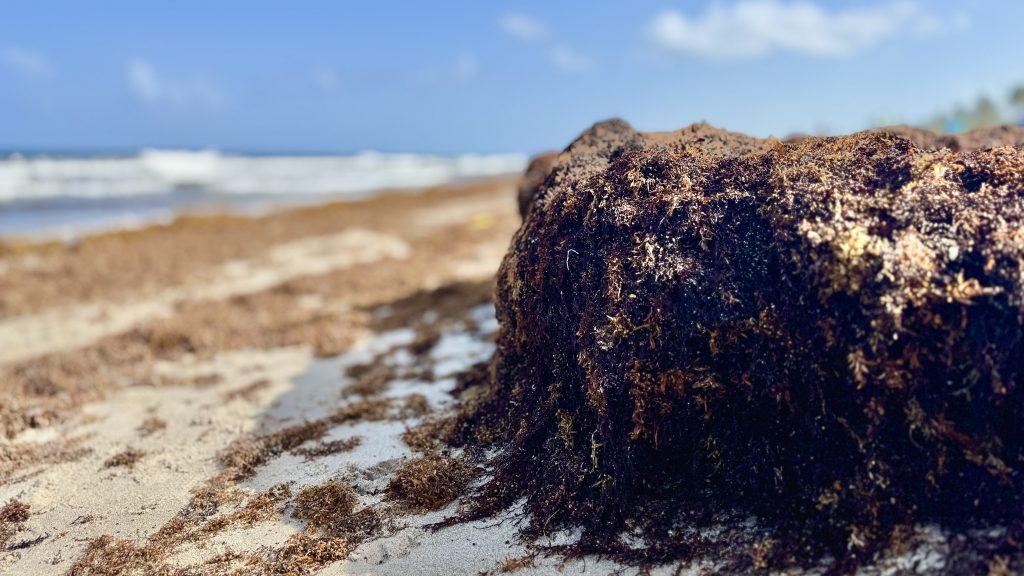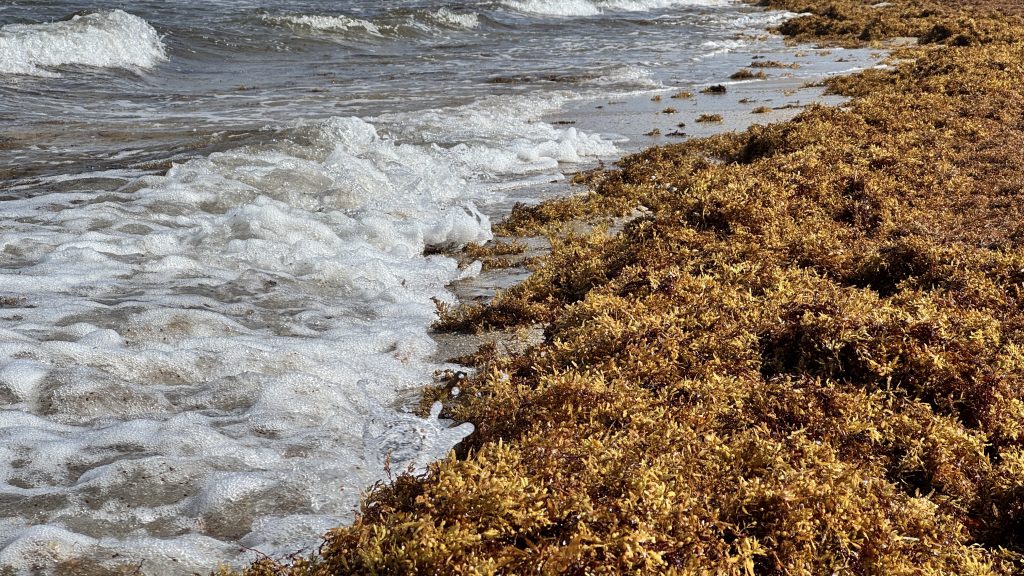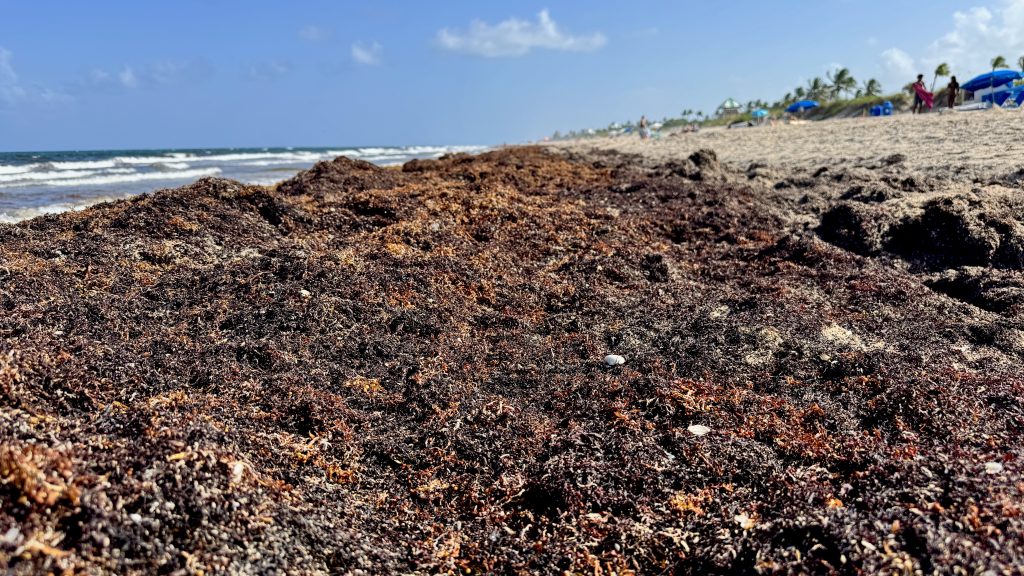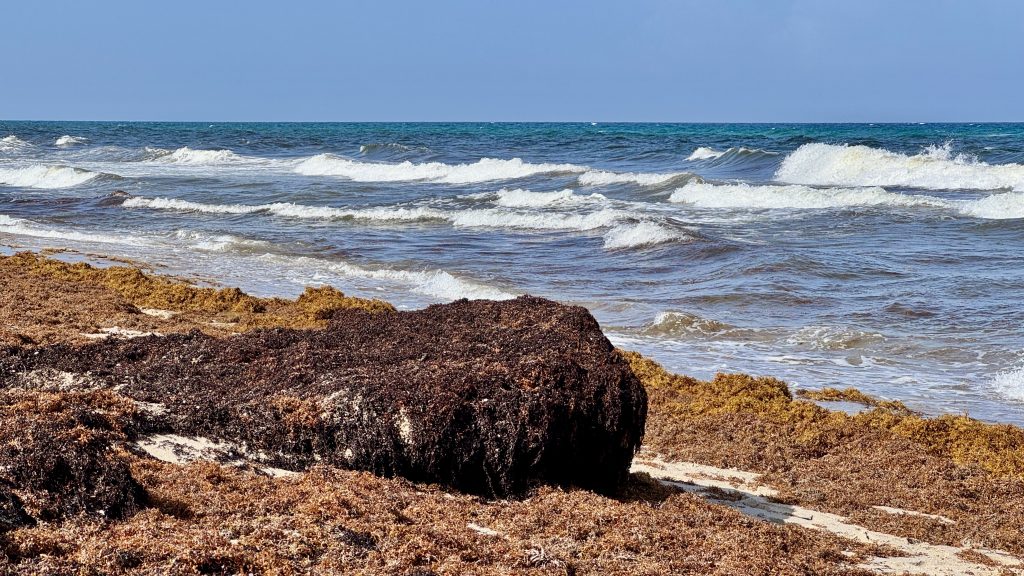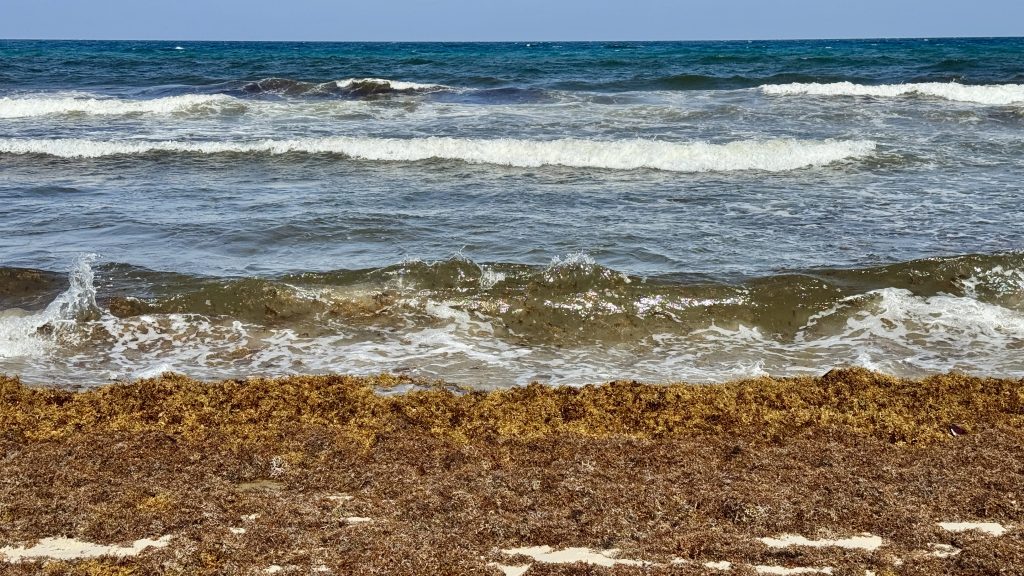Mounds of sargassum have begun to build up on local beaches, with strong east winds and a rejuvenated stream of the brown-colored seaweed leading to a less-than-hospitable swimming environment. The seaweed buildup has also led to some reports from beachgoers of emitting a foul odor. (If the video above this story does not load, disable ad-blocking software.)
Sargassum began its latest buildup along the shoreline in earnest over the weekend when there were afternoon high tides, and the combination of hotter temperatures and easterly winds has led to additional blooms and pushed more of the plant life onshore in recent days. By Thursday, most local beaches had mats of sargassum spanning several yards in width at the water line, while breaking waves appeared brown in coloration since so much was present close to the near-shore sandbars. Would-be swimmers tended to avoid taking a dip.
Earlier this year, researchers who study marine biology warned that the summer season could bring more sargassum to South Florida beaches than normal. Sargassum develops in the Sargasso Sea, a region of the Atlantic Ocean bounded by four currents, centered off Florida with the aforementioned currents stretching from the west coast of Africa, to the east coast of South America, to the Canadian maritimes. Much of the sargassum has been linked to weather patterns bringing in marine vegetation whose growth was spurred by over-fertilization in the rivers of West Africa and the Amazon.
The University of South Florida Optical Oceanography Lab, which tracks sargassum growth and movement, issued a monthly report on the aquatic plant species. The latest bulletin was issued July 1 after a research team found higher than usual growth continued worldwide, but weather patterns kept it from accumulating en masse on the Florida shoreline. In three out of five areas tracked – the Gulf of America, western Caribbean, and eastern Caribbean – sargassum levels increased significantly, with 0.4 percent of the ocean surface experiencing floating clumps.
The USF team is predicting the sargassum plague will begin to wane from its peak, though its presence will be higher than historical norms.
“June 2025 appears to be the month of a turning point for the tropical Atlantic, after which the total Sargassum amount will decline, although the absolute amount will continue to be high than most of previous years,” the report said. “Sargassum inundation of variable degree will continue to occur in most of the Caribbean nations and islands as well as along the southeast coast of Florida. However, whether a beach or small region receives large amount of Sargassum depends on local factors that are difficult to predict, including winds and ocean currents.”
With sea turtle nesting season still underway, the state Department of Environmental Protection has issued special guidelines to municipal governments on sargassum removal. During much of the year, tractors with attached mechanical rakes clean beaches on a daily basis, however if the sargassum begins to accumulate during nesting season in proximity to nests, it must be removed manually rather than by a machine.

Follow Us on Facebook

Police, Fire & Courts
Boca Raton Man, 59, Charged in Hit-and-Run Accident on Palmetto Park Road

Police, Fire & Courts
Cops: Man Broke Into Six Boca Raton Stores, Captured By Police While Fleeing

Police, Fire & Courts
Boca Raton Man, 59, Charged in Hit-and-Run Accident on Palmetto Park Road

Police, Fire & Courts
Cops: Man Broke Into Six Boca Raton Stores, Captured By Police While Fleeing

